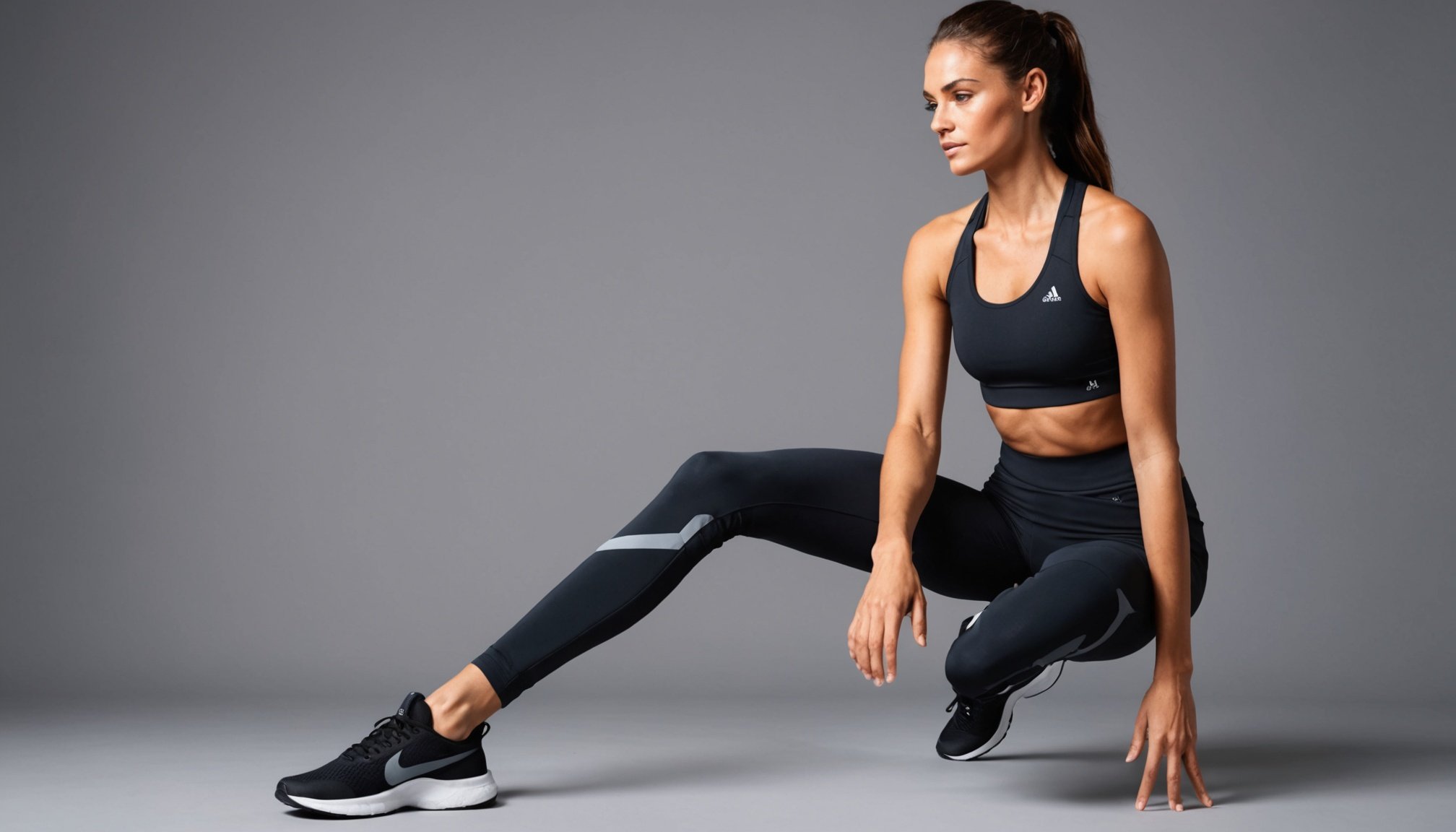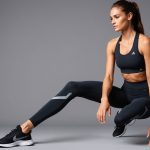Overview of Breathable Activewear Fabrics
Understanding how breathable activewear functions can greatly enhance workout comfort. At its core, breathable activewear is designed to allow airflow, helping the body maintain a stable temperature during physical exertion. This prevents overheating and improves wearability for extended periods. Historically, activewear was predominantly cotton-based; while comfortable, it lacked the technical benefits we see today.
The evolution of activewear technology has been significant. In the mid-20th century, synthetic fibers emerged, offering better moisture management. This transformation laid the groundwork for today’s fabric innovation that integrates advanced features like moisture-wicking and UV protection. Current activewear technology leverages these innovations, enhancing performance and durability and making it a key focus in the UK market.
In parallel : Unleash Your Inner Explorer: The Definitive Style Guide for Chic Safari Adventures in UK National Parks
The UK market is now witnessing a booming trend where the demand for breathable fabrics is at an all-time high. Leading brands are continually experimenting and innovating with materials to meet this demand. It’s clear that activewear technology will continue to evolve, driven by consumer demand for practicality, comfort, and sustainability in their fitness pursuits.
Recent Innovations in Breathable Fabrics
Recent fabric advancements have revolutionised breathable activewear, with moisture-wicking and temperature regulation at the forefront. New materials like polyester blends and advanced membranes now dominate activewear technology due to their ability to draw sweat away and allow airflow, keeping users cool and dry. This moisture-wicking property is particularly impactful in high-intensity workouts, ensuring comfort and preventing irritation.
Also read : Unveiling Premier UK Brands for Personalized Scarves: Your Ultimate Guide to Customized Designs
New Material Technologies
The introduction of smart fabrics is a game-changer in this realm. These fabrics integrate technologies that react to body temperature changes, adjusting their ventilation accordingly. This adaptability caters to varying workout intensities, offering personalised comfort and performance.
Smart Fabrics Integration
Fabric innovation continues with strides in Bluetooth-enabled garments that deliver real-time data on physical activity and even provide feedback for performance enhancement.
Sustainable Fabric Alternatives
Sustainability is increasingly pivotal, with recycled materials and organic fibers gaining traction. Brands are focusing on eco-friendly production methods, reducing environmental impact while maintaining the functional benefits of modern activewear technology. These sustainable options not only support environmental consciousness but also meet consumer demands for greener choices in fitness gear.
Impact of Breathable Fabrics on Fitness Trends
Breathable fabrics are pivotal in reshaping fitness trends, directly influencing how individuals approach their workout routines. With the increasing availability of activewear designed to enhance performance through moisture-wicking and temperature regulation, consumers are experiencing a shift towards more dynamic and versatile exercise sessions. These fabrics facilitate better sweat management, preventing discomfort and chafing, thereby encouraging longer and more intense workouts.
The role of activewear technology in promoting an active lifestyle is undeniable. By prioritising fabric innovation, brands develop clothing that supports various exercise forms, from high-intensity interval training to yoga. This shift reflects a broader lifestyle change, where fitness and comfort must coexist, driven by informed consumer choices.
Future trends anticipate further integration of breathable textiles into everyday wear, bridging the gap between workout gear and casual clothing. As technology advances, it is expected that we will see performance enhancement features becoming more common in daily attire. This evolution underscores the growing importance of functionality and comfort, setting a new standard for fitness apparel.
Brand Comparisons and Market Leaders
In the UK fitness market, several activewear brands stand out for their innovative use of breathable fabrics. Brands like Nike, Adidas, and Lululemon have become synonymous with activewear technology, each offering unique fabric innovations.
Nike employs its proprietary Dri-FIT technology, which excels in moisture-wicking, ensuring that sweat is efficiently drawn away from the skin during workout sessions. This focus on moisture management makes their products ideal for high-intensity activities.
Adidas emphasizes temperature regulation, using ClimaCool and ClimaLite technologies. These are designed to maintain a stable body temperature by enhancing airflow, thereby preventing overheating during prolonged exercise.
Meanwhile, Lululemon has made strides with its Warpstreme fabric, which combines comfort with performance. Known for its soft feel and durability, this fabric also features inherent breathability, making it popular among yogis.
The UK fitness market is continuously influenced by consumer demands for functionality and style, steering these brands to push boundaries further. As consumer preferences shift towards versatile and sustainable options, these brands must innovate to maintain their competitive edge.
Expert Opinions on Breathable Activewear
In the rapidly evolving world of activewear, insights from industry experts are invaluable. Material scientists emphasize the sophistication in fabric performance. They note that the transition from traditional fabrics to advanced breathable materials like polyester blends results in superior moisture-wicking and temperature regulation properties. These allow fabrics to efficiently manage sweat and body heat, enhancing overall comfort.
Fitness professionals play a pivotal role by recommending gear tailored to various activity levels. They advise athletes to select activewear that aligns with their specific needs, considering factors such as workout intensity and environment. For instance, in high-intensity workouts, moisture-wicking garments are preferred to minimize discomfort.
Consumer feedback provides additional perspective, highlighting real-world experiences with breathable activewear. Users frequently endorse products that balance performance and comfort, confirming the practical benefits touted by experts. This feedback is crucial for brands to refine their offerings and better cater to user preferences.
Integrating expert opinions across material science, fitness expertise, and consumer insights ensures a comprehensive understanding of breathable activewear trends and their practical applications.
Statistical Insights on Consumer Preferences
Considerable consumer behavior insights reveal an increase in activewear sales, highlighting a shift towards breathable fabrics in the UK market. Recent reports indicate a surge in demand for garments that offer enhanced comfort and practicality, driven by the integration of activewear technology. Key market statistics suggest that the sales volume of breathable activewear has outpaced other categories, underscoring its popularity among fitness enthusiasts.
Sales Trends in the UK Market
Within the UK market, activewear sales have surged notably, demonstrating a strong preference for fabric advancements such as moisture-wicking and temperature regulation. These features are increasingly sought after by consumers aiming for optimal performance and comfort during workouts.
Demographic Preferences in Activewear
An analysis of demographic preferences highlights that millennials and Gen Z consumers are the primary drivers of this trend. Their focus on health and fitness, coupled with a keen interest in sustainable alternatives, heavily influences their purchasing decisions.
Growth Predictions for Breathable Fabrics
Looking ahead, industry forecasts predict a continued rise in the adoption of breathable fabrics, fueled by technological advancements. This growth trajectory suggests a promising future for fabric innovation, with a potential market expansion expected over the coming years.











